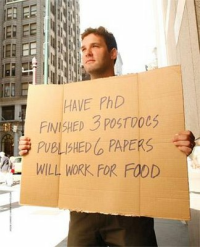With yesterday’s labor report showing a decline of 11,000 in nonfarm payrolls and with upward revisions of more than 150,000 to the payrolls data from prior months, some people are, understandably, thinking that the unemployment rate might soon be going down.
A natural question that some might be asking this weekend is, “Based on the experience of the last two ‘jobless recoveries’, when might the jobless rate be expected to fall”?
 Well, if past is precedent, the news isn’t good.
Well, if past is precedent, the news isn’t good.
After the last recession in 2001, nonfarm payrolls first produced a positive number in June of 2002 but, from that time on, the unemployment rate rose for a full 12 months, from 5.8 percent to a peak of 6.3 percent in 2003.
The peak in the jobless rate came at around the same time that nonfarm payrolls posted their last decline for the cycle, a loss of 42,000 in July of 2003.
Contrary to what some might believe, once nonfarm payrolls produce a positive number, they don’t just keep climbing. In fact, back in 2002 and 2003, from the time of that first plus sign in front of the payrolls number until the last minus sign one year later, there was a net decline of 506,000 jobs.
The jobs picture wasn’t much better after the 1990-1991 recession.
After the first post-recession payrolls increase in June of 1991, job growth was much steadier than after the 2001 recession but, here too, the unemployment rate continued to rise for an entire year, in this case, by almost a full percentage point from 6.9 percent to 7.8 percent.
Based on the last two recessions, we’re still more than a year away from a sustained decline in the jobless rate.
ooo
Tim Iacono is a retired software engineer and writes the financial blog “The Mess That Greenspan Made” which chronicles the many and varied after-effects of the Greenspan term at the Federal Reserve. Tim is also the founder of the investment website “Iacono Research” that provides weekly updates to subscribers on the economy, natural resources, and financial markets.


What's been said:
Discussions found on the web: